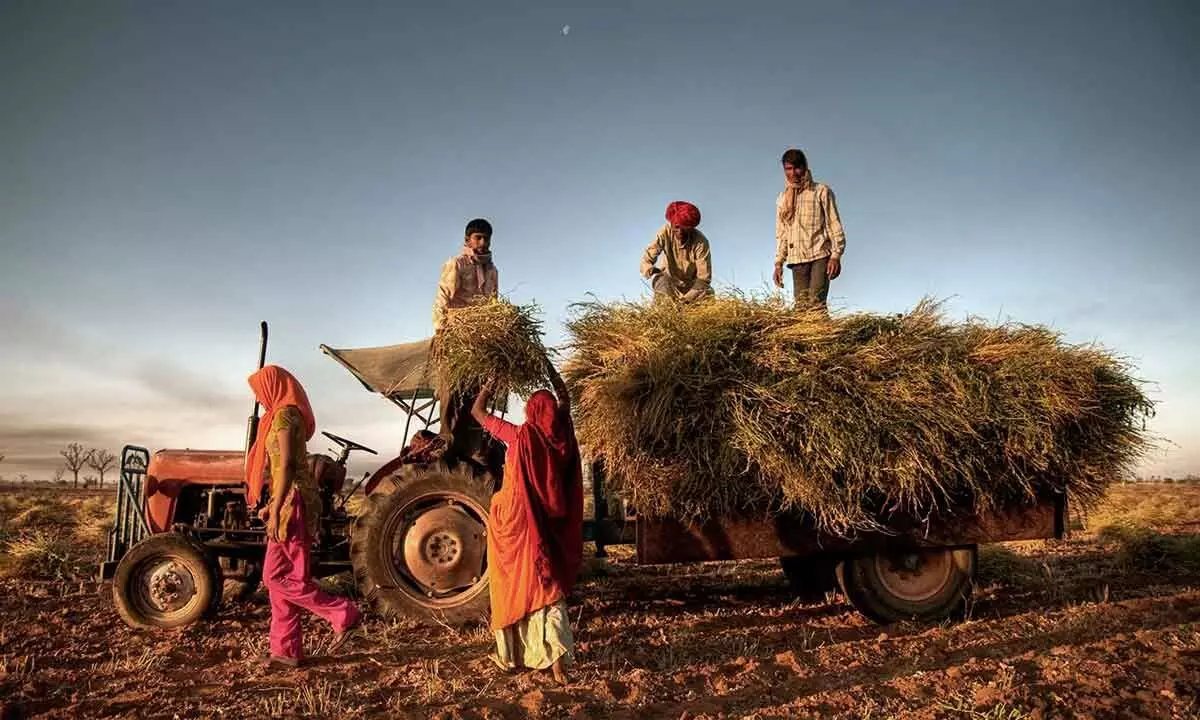Robust rural demand key to sustaining growth

Prime Minister Narendra Modi away in Dubai for the COP28 summit has exulted in the better-than-expected GDP growth in the second quarter as a display of resilience and strength of the Indian economy, “in the midst of such testing times globally.” At a time when global economy is still not out of woods - Germany has slipped into recession and US is feared to suffer it next year - and geopolitical events and conflicts such as Russia-Ukraine and Israel-Hamas wars are heightening concerns, India continues to remain a bright star, clocking record growth rates. It may remain the fastest-growing major economy with a growth of over 6% over the next few years.
While the global growth dynamics are skittish, the Indian economy is reinventing itself, with a reinvigorating demand in most sectors. GDP grew at a faster-than-expected rate of 7.6 per cent in the Q2, main boosters being rise in government spending/investment as well as policy impetus to industry – manufacturing was the big gainer. The quarter saw a growth of 13.9% in manufacturing sector, 13% in construction, which are big employment generators after the agriculture. Adding to the cheer of the nation is a record leap by the stock market capitalisation touching $4 trillion mark, making India the only fourth country to do this feat.
During the corresponding quarter of last financial year, the GDP growth was 6.2 per cent. It was 7.8 per cent in the Q1 this year. The persisting weakness in rural economy, reinforced by a low 1.2 per cent growth in the agricultural sector, is a major worry.
It is being forecast that India could become a developed country by 2047 with an average annual real GDP growth of 7.6 per cent over the next 25 years. However, growth shall mean pulling more people out of poverty morass and a major rise in GDP per capita i.e., the money spent by consumers in the country to buy goods and services. Right now, India is among the world’s largest economies only because of higher GDP, which is due to a large population.Middle-income developing countries have a per capita income of around $12,000, whereas ours is a mere $2,000. Till recently, we faced the ignominy of falling behind Bangladesh ($1,887), once one of the world’s poorest countries, in GDP per capita. In 2019, India’s GDP per capita dropped from $2,104to $1,876.
Private consumption which grew just 3.1% in Q2 also remains muted. Going forward, there are calls for the government to focus on private consumption which, accounting for nearly 60% of the GDP, slowed to 3.1 per cent from 6 per cent, largely due to a weakness in rural demand, which is sapped by a weak 1.2 per cent growth in the agricultural sector. Companies won’t profit unless consumers are willing to buy. Employment deterioration, decline in quality or regular wages jobs, inflation, weakness in rural economy dampen purchasing power of people. Nearly three-quarters of India’s families depend on rural incomes. A more productive, competitive, diversified and sustainable agriculture is an imperative, lest it causes rural stress and dampens economy. India may have to make greater efforts to keep inflation under check to fend off any hike in interest rates, by softening commodity prices, easing supply side pressures and keeping track of global shocks. It also should bolster green economy to combat climate change whose consequences can shave off billions of dollars.







